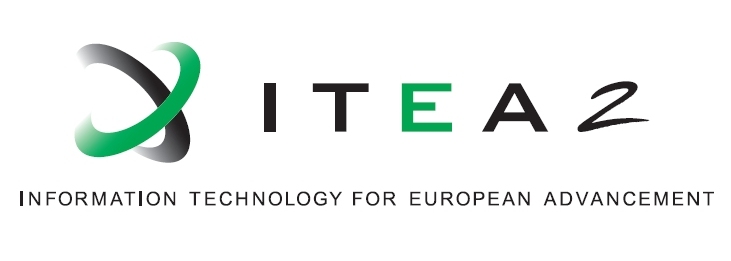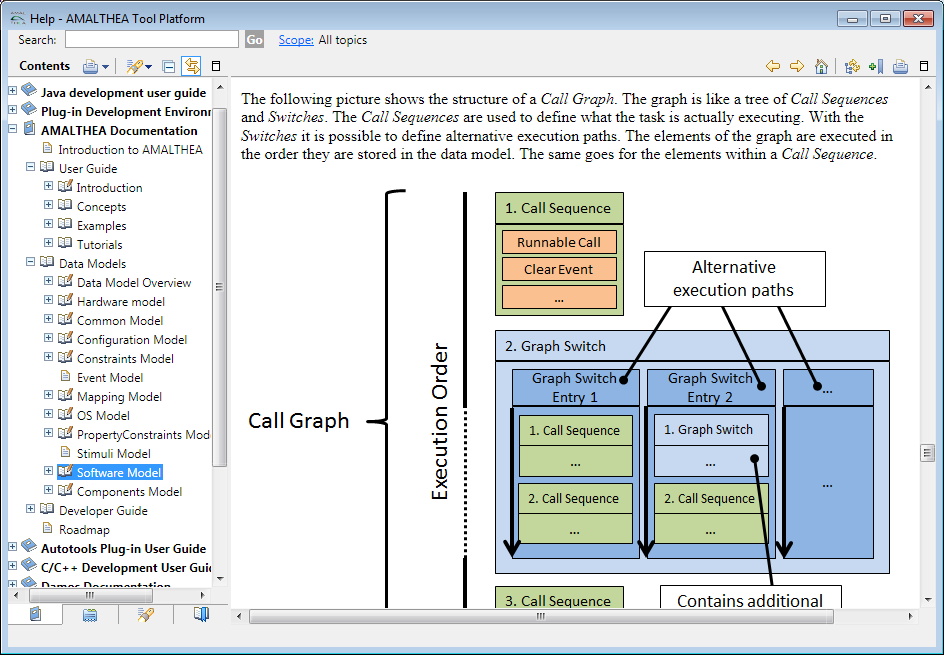AMALTHEA4public
Building an eclipse-based open source development platform, extendable by the communityA major goal of automotive domain is more and more automated driving that may even end up driving autonomously. Consequently, the complexity of driver assistance systems further increases to the point that new hardware architectures like multi- and many-core platforms have to be considered. Current development tools can no longer handle this complexity. Therefore, upcoming development tools need to be more efficient and designed to meet future requirements.

Assistance systems to exculpate the driver (Source: BOSCH)
While multi-core architectures have already been introduced to the development of embedded systems, there is still a need for more powerful hardware platforms to meet future challenges. For instance, many-core systems provide a further increase in the number of cores to reach more computational power for control units. However, these architectures bring in additional challenges, because of the increasing number of cores causes more complex network architectures on a chip. Therefore, compared to multi-core systems the underlying architecture (network-on-chip) differs significantly. Description capabilities of existing hardware as well as software models have to be extended to support these new system architectures. Furthermore, introducing extended models, new tools and techniques are required to make effectively use of the resulting level of parallelism, as well as the performance of the new architecture.
For developing automotive control units, a variety of tools is used. Thereby each tool has a specific view on the system or is used in one or more particular steps of development. In each case, specific information needs to be processed and possibly changed. The modified data is often the basis for further development steps, such that a chain of tools is formed. For the transition from one tool to another, developers must often transfer the data manually, due to different data formats.
The AMALTHEA Project
Therefore, the goal of the EU ITEA 2 AMALTHEA project was to reduce this effort. Together with 14 partners from Finland, Turkey, and Germany, we developed a platform on basis of Eclipse that includes a common data model and offers multi-core support. The project started in July 2011 and was successfully completed in April 2014.
Data models of the AMALTHEA Platform contain all the information that are necessary for the complete development process, so that the data is generated at a central location and can be used and exchanged via well-defined interfaces between different tools. The data includes both, software and hardware descriptions, which were extended to elements for supporting multi-core aspects.
To be able to also considering variants in automotive systems in the development process of a system, in AMALTHEA we developed a method for the combined description of software and hardware variants. Thereby, we can check dependencies between software and hardware components immediately by this method and thus can prevent errors during the selection of a specific variant.
A special focus in the development of the tool chain was on providing open interfaces, such that different tools, whether open source, commercial or corporate-owned, can be integrated. To achieve these goals, we use Eclipse as the basis for the development environment, which provides a plug-in mechanism and thus an easy integration with other tools.
The picture above depicts the different AMALTHEA models and open-source basic tools, which have been developed during the project. These tools were used to build up a tool chain, which is 100% open-source without any commercial tools. This allows everyone to try out an AMALTHEA tool chain, which is built with the AMALTHEA Platform. You can find more information about the AMALTHEA Common Platform Models in the Help pages of the AMALTHEA Platform.
What's next?
The next step to support not only embedded multi- but also many-core system development requires further extensions as well as enhancements of the AMALTHEA common data model and development methods. Therefore, the new AMALTHEA4public project targets to provide both a methodology and a platform for the model-based development of embedded multi- and many-core systems. AMALTHEA4public will benefit from prior publicly funded projects by integrating their outcomes into the resulting development environment. Of course, these project results might need adaption to fit to our overall goals. For instance, we will base our work on the open-source development platform of the 2014 successfully completed project AMALTHEA. However, this platform will need to be extended to include not only methods for systems engineering, but also for verification and test generation as well as analyzes of product lines, which are issues focused by AMALTHEA4public. A further important aspect related to these methods is the platform extension for a continuous support of many-core systems.
Although initial focus of AMALTHEA4public is the development of embedded systems for automotive industry, results will not be limited thereto. To ensure this goal, capabilities and functions of the resulting platform will be demonstrated using real world applications not only from the automotive industry, but also from further domains like ICT and automation.
The EU ITEA2 AMALTHEA4public project has started in September 2014 and involves 21 partners from Germany, Sweden, Spain and Turkey. These partners cover nearly all steps of the value chain, i.e. automotive suppliers, tool vendors, consulting and research. In addition, an Advisory Board has been established, including amongst others different vehicle manufacturers to evaluate and support the transfer to industry results from a user perspective.
The AMALTHEA4public consortium will be supported by its partner Eclipse Foundation Europe GmbH to publish the results as open-source Eclipse project and form a community around the project. For this purpose, AMALHTEA4public includes an extra work package “Maintenance and Community”. Goal of this work package is passing the three phases required to become an Eclipse project:
- Project proposal and creation
- Incubation phase
- Graduating from incubation
Tackling the route to an Eclipse project, AMALTHEA4public consortium aims to ensure long-term maintenance and development of the platform. Finally, the platform shall be established as a de-facto standard for the development of (automotive) embedded multi- and many-core systems.
Try it out and give feedback
In addition to the feedback from the Advisory Board we want to provide the results for a wide range of users, therefore we published the development environment under the Eclipse Public License. In April 2014, we published Version 1.0 of the platform on the AMALTHEA Homepage (www.amalthea-project.org), which includes all results of the AMALTHEA Project. In order to get more Feedback we also integrate a forum to discuss topics and realizations of the platform and its models.
Links


About the Authors




